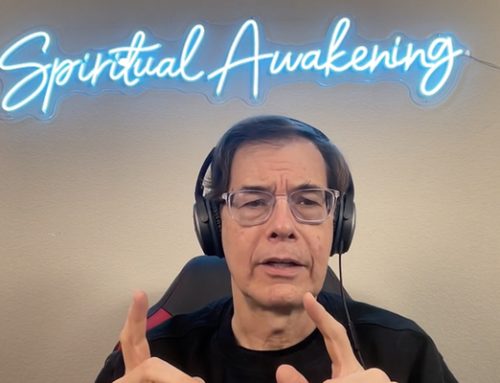Happy Thursday,
I hope you are happy and in well-being.
In my blog today, I will share:
1. The Challenges Of Mouth Breathing, which is the feature of my video blog portion today.
2. The Backward Bike: A very cool video clip that clearly demonstrates and explains why people are so challenged to learn new things, particularly if they’ve already learned a specific pattern of action or behavior prior to attempting to learn a new way of doing the same thing.
3. Some art sharing from my downtime over the weekend.
4. CHEK Course Completions.
The Challenges of Mouth Breathing
“Mouth breathing” breathing is a term used in rehabilitative circles to describe breathing through the mouth when we should be breathing through our nose.
My vlog today is Part 1 of a Four Part Series in which I give a general overview of the relevant issues of mouth breathing, and faulty breathing challenges.
In the following three parts of this series, I will look at the three common categories of challenges that are often associated with mouth breathing and breathing pattern disorders in general. They are:
1. Psychological stress
2. Physical/congenital challenges
3. Biochemical challenges, which include challenges emanating from our food/drink, fungal and parasite infections, bacterial dysbiosis, toxicity, and drug side effects.
In my video today, I explain that it is normal to breathe through the mouth and nose when exerting ourselves, but it is not normal to breath through your mouth when resting or during the low levels of physical stress common to daily activities.
I offer the same criteria used for determining when you are in the “work-in” zone of effort and a threshold point for determining approximately when we may trigger off progressively more mouth breathing activity.
In general, when our physical output is such that we can maintain a resting heart rate and breathing rate, have a moist tongue, and are doing an activity at an intensity level that would feel comfortable on a full stomach, nasal breathing is ideal.
As our level of exertion increases, we progressively reach a point where we need more air than we can bring in through the nose alone. At that point, we are progressively more likely to mouth breath so we can meet the needs for oxygen.
Where each person crosses the threshold and begins mouth breathing under exertion will vary from individual to individual based on a number of factors.
In my video, I give an overview of the body-mind effects of optimal breathing, and restful breathing in contrast to the challenges of mouth breathing.
I show how an elevated breathing rate changes the balance of the autonomic nervous system, and what other functions change as we progressively stimulate the sympathetic nervous system.
I also explain the basic effects of breathing on CO2 levels and how carbon dioxide influences our basic physiology.
I also share that the average person breathes about 25,900 breaths a day, and how that correlates with some other rhythms in the body, and our solar system based on Rudolph Steiner’s teachings.
I finish my video blog by teaching how to take a full breath, and show a method I developed to help retrain people to breath optimally.

I hope you enjoy my video blog on the challenges of mouth breathing, and common breathing challenges in general.
Suggested Resources:
1. Breathe To Succeed by Tanya Clifton-Smith (out of print)
2. The Last 4 Doctors You’ll Ever Need – multimedia ebook
3. How To Eat Move & Be Healthy! – book
4. Holistic Respiration, Andrew Johnston, CHEK Practitioner Level 4 Thesis (www.triumphtraining.com)
The Backward Bike: Lessons On How We Learn
Below, you will find a link to a great video that’s not too long, and well worth watching.
In this video, you will learn what happens when a bicycle is engineered with a twist; you turn the handlebars right and the wheel goes left and vice-versa.
What follows is a fantastic explanation and exemplification of the learning process, and a very clear demonstration of why, and how children learn much faster than adults.
Personally, I love this video because the basic mechanics of how the nervous system learns are the same for most any task, be it riding a bicycle (normal or made weird), learning ideas about how life works (such as beliefs about God, sex, money, success, etc.), changing your diet, or otherwise.
As you will see, the secret is to be “open to the possibility of change” and to “practice, practice, practice” with enough regularity that the new pattern becomes efficient enough to override the previously learned neural pathways.
This video will be particularly fun to watch with children if you have them. It may inspire them to learn, and make them feel good knowing that there are things kids can do better than adults in general…learning!
I’ve seen many studies conducted where adults are taught various healing methods, be it laying on of hands, moving energy, bending spoons with mental powers alone, or healing others at a distance.
In each case, a significant proportion of adults “couldn’t do the methods taught”, but…almost all the children could learn and apply the methods quickly.
As adults, it is very important that we not imposed our closed-mindedness on children if we want to give them the best chance of thriving in the world, and being effective contributors in the world.
Countless times, I’ve seen children being programmed into very self-limiting beliefs about life and God through religious influence by parents and exposure to churches and temples.
If we keep training our children to make the same mistakes we have without giving them a well-rounded, unbiased exposure to different ways of living and experiencing, the world will never change.
If we don’t allow our children to grow and explore their options (safely), they will never actually have “free will”; we will always have people with dogmatic beliefs that can’t see or appreciate that their beliefs, and the choices that result from them are the cause of their pain…
If, for example, Jesus were to return to earth today, chances are exceedingly good that “the same people would crucify him again for the same reasons”… Enjoy this bicycle ride into the “reality or learning.”

Enjoying Art, Play and Spiritual Nutrition
This weekend, Angie and I decided to come up to the Heaven House and do some painting together so she could have some time for restful creativity before leaving to teach HLC2 in Toronto (this week).
Angie’s been teaching and traveling a lot lately, and I’ve been busy too, so we were excited to have an day of unbound play together; Penny wanted to enjoy being at home doing nothing, which is great medicine for her because she’s a very busy woman too.
I had told Angie how much I loved the latest music/documentary video production from “One Giant Leap”, titled “Who Am I?”
She loved One Giant Leap (their first production is by that title as well as their working production name), so we put it on, and plugged in some good speakers to enhance the musical experience.
We listened, watched, felt, intuited and experienced this amazing program (I mentioned it in a recent blog if you want to a link to it) as we painted.
This is what came through me. I wasn’t in the mood to try and be technical with my painting; I just wanted to play and feel good about the whole process regardless of what came out.
I had a lot of fun transferring my inner-experience to the canvas; I’m not finished with it yet and will get to it again soon.
My art piece is really an artistic expression of the vast dynamics of love and human nature. We really are very complex creatures…
Angie was recently teaching HLC1 in Chicago and she got to meet up with her uncle for a visit. She really had a great time visiting him and came back with all sorts of fun stories to share.
While she was visiting him, she showed him some of her art and he mentioned how much he’d love to have a piece of art by her. She took that to heart and painted the piece above for him.
It was amazing to watch her paint this as I was paining my piece. Angie is very diverse with her art, and manages to put the most amazing color combinations together. If you should run across this bear on a moon lit night in the forest, please don’t shoot it, it is Angie’s uncle!
I created this in the gym Sunday while I was working out. I have a lot of what I call “black board art” in my files from over the years.
It has been a long time practice of mine to draw or write poetry between sets in the gym to activate the right brain hemisphere.
This is beneficial as a means of calming the body and mind, and allows me to keep my creative juices flowing each day; the world is pretty pre-programmed, and can dampen our creativity if we get stuck living vicariously through the media and not being actively creative ourselves.
I love to study quantum physics, and deep metaphysical teachings for a number of reasons. One of them is that studying these topics provides the best possible explanations for many of the experiences I have through shamanic journey work, tai-chi, Qi-gong, and meditation.
The central black and white image represents the Zero Pt. Field (waves of potential) and what would be referred to metaphysically as “vertical time.”
The tree represents the tree of life, in which horizontal time and space-time relationships emerge as the reality we know and experience. The elements earth, water, fire, air, and ether/space are represented in the colors and forms in the art.
I hope you feel inspired to add a whole new dimension to your workouts, and make the gym a fantastic whole-brain environment for growth of your body, mind, and spirit!
CHEK Course Completions
Exercise Coach with Donal Carr – Sydney
Congratulations to our newest Exercise Coaches taught by Faculty Donal Carr!
I hope you’ve enjoyed my blog today.
I’ll look forward to sharing the remaining three segments of my series on mouth breathing and breathing challenges as we move forward.
Love and chi,
Paul Chek










